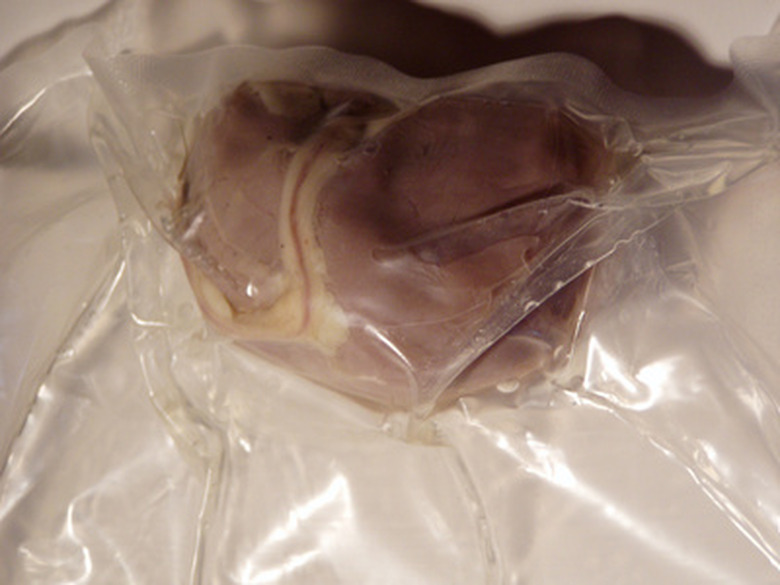Excretory System Science Project Ideas
An organism must rid itself of waste and toxins that build up and this is the excretory system function. The primary organs of excretion system of the human body are the lungs, kidneys and skin. The lungs get rid of carbon dioxide, while the skin excretes waste in the form of sweat. The urinary system gets rid of waste in the form of urine. There are a variety of science projects that can demonstrate these principles and allow students to show an understanding of the systems.
Excretory System Model
Excretory System Model
In this excretory system project, students make a model of the excretory system that includes the kidneys, bladder, ureters and urethra, as well as the arteries and veins that bring blood to the kidneys for cleaning. The model can be three-dimensional, or it can be drawn and pasted onto a cardboard sheet. Let the students come up with innovative ways to represent the different organs. Give them a few tips and award extra points for students who can make their models out of recyclable materials. For example, a balloon can be used to represent the bladder and kidneys can be modeled from a basic dough that is colored with food dyes.
Filter System Project
Filter System Project
This science project shows how the kidneys work together as a filtration system. It is a simple science project for younger students that demonstrates the concept of a filter and how it works. You will need either cheesecloth or filter paper, food coloring, a pound of fine-grained sand, a gallon of water and a tall, thin glass jar. Students mix the sand, water and food coloring together and set it aside. Fill the tall jar with water until it is about half full. Place the filter paper or cheesecloth over the top of the jar. Add the colorful sand and water mixture to the jar. Because of the action of the filter, only the colored water will be allowed through. The clear water changes color but the sand stays behind, stopped by the filter paper. Lift the filter paper and pour out the water. Add new water to the sand and water mixture and repeat the procedure. The color of the sand and water mixture will slowly fade with each change and this will demonstrate how the kidneys cleanse urea and toxins from the blood while the actual blood cells remain behind.
Sweat Study
Sweat Study
This project focuses on the body's largest excretory organ, the skin and the process of sweating. It takes the form of an experiment and requires purchasing a range of different brands of anti-perspirants. The project then requires some athletic volunteers to perform sweat-inducing exercise. Test out the effectiveness of the different anti-perspirants on the volunteers. Be sure to include a control group to compare the amount of sweat produced. Have the same students perform the same amount of exercise both with and without the anti-perspirant, and then measure the amount of sweat they produce by looking at the sweat marks produced on the t-shirts worn by the volunteers. Make sure that the exercise is performed under similar conditions for both sessions. Once the results are in, draw up a graph to represent your findings.
How Lungs Do Their Job
How Lungs Do Their Job
This project will focus on the lungs, which are responsible for getting rid of waste gases. Begin by cutting an opening into the center of the bottom of a plastic bottle. Cut two ice bags so that they are about one inch in length, and then use rubber bands to tie an ice bag to each end of a Y-tube. Place the Y-tube into the opening at the bottom of the plastic bottle. Use modeling clay to fix the Y-tube in place so that no air can get in or out. Cut a rubber balloon in half. Stretch the top part of the balloon with the air tube under the bottle and use rubber bands to fix it into position. Tie a piece of string to the air tube of the balloon. When the string is pulled, this will inflate the ice bags, demonstrating the breathing process.
Cite This Article
MLA
Lemon, Kylie. "Excretory System Science Project Ideas" sciencing.com, https://www.sciencing.com/excretory-system-science-project-ideas-7921096/. 3 August 2018.
APA
Lemon, Kylie. (2018, August 3). Excretory System Science Project Ideas. sciencing.com. Retrieved from https://www.sciencing.com/excretory-system-science-project-ideas-7921096/
Chicago
Lemon, Kylie. Excretory System Science Project Ideas last modified August 30, 2022. https://www.sciencing.com/excretory-system-science-project-ideas-7921096/
